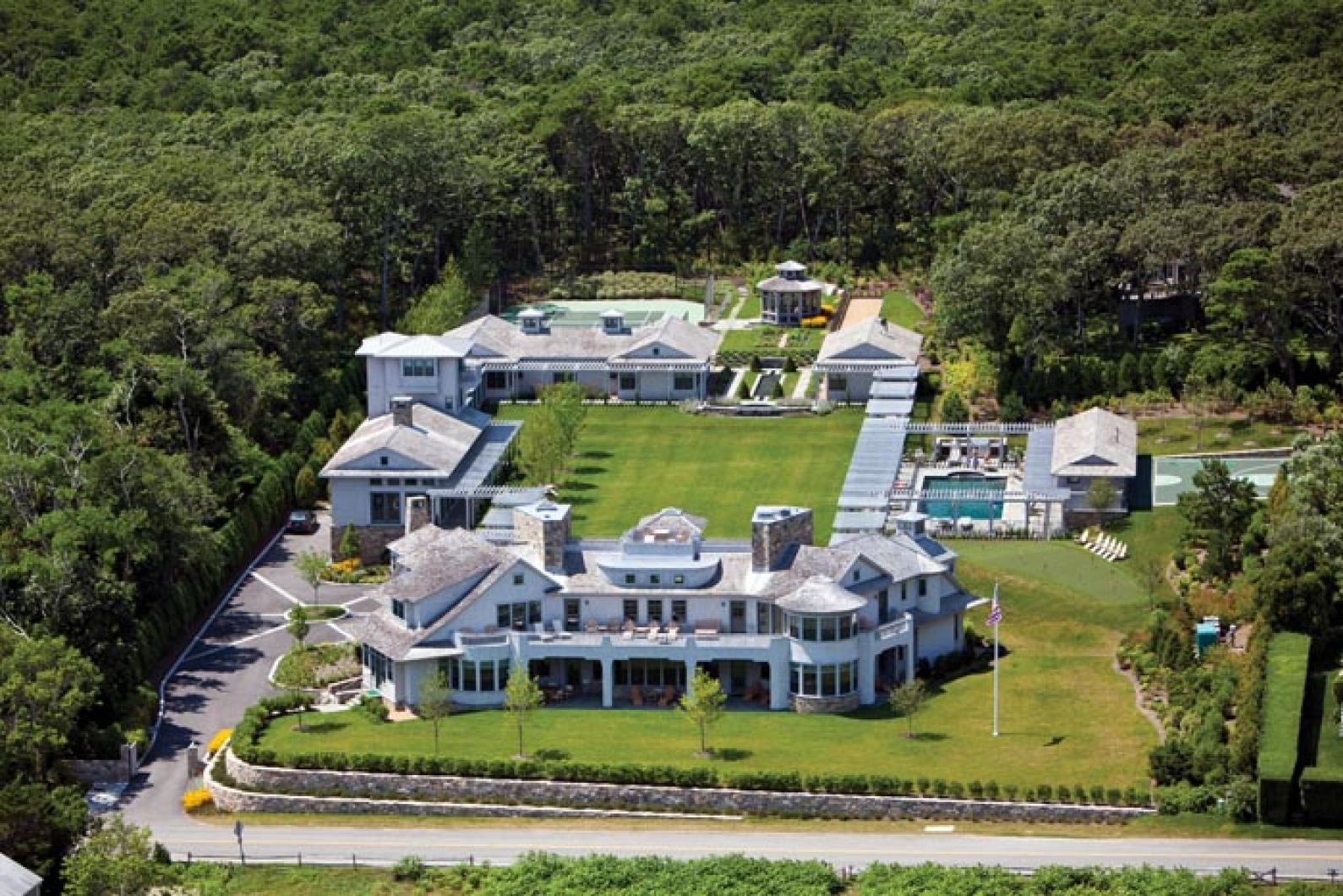To some, they’re a boon to the construction industry; to others, a blight on the landscape. When talk turns to whether the Martha’s Vineyard Commission should regulate so-called mega-mansions on the Island, there’s rarely middle ground, and there’s usually a crowd.
On Monday the commission land use planning committee met to discuss possible changes to the DRI checklist, the process that determines what projects are sent to the commission for review as developments of regional impact. The Vineyard Conservation Society, an outspoken opponent to the proliferation of what it sees as out-of-scale trophy houses, and the West Tisbury planning board asked the commission to consider adding the construction of large houses to that checklist. The meeting wasn’t a public hearing, but it attracted representatives from both the Island construction and conservation communities, and prompted both sides to speak out.
“What is the problem here?” asked architect David Handlin. “Do you have any idea how many large houses have been built in the last five to 10 years? Why is this coming up now? The construction industry on this Island and the level of competency the people here have is really amazing. Anything that you do to put a cloud or level of uncertainty on the future of these projects could be very chilling.”
Bruce Rosinoff of the Vineyard Conservation Society called one West Chop house designed by Mr. Handlin a “travesty,” and said it was past time for the commission to step up.
“I think it’s critical for the commission to take this on,” said Mr. Rosinoff. “It’s certainly appropriate at this time. The houses have gotten astronomically larger than they’ve ever been.”
Mr. Rosinoff’s thoughts were echoed unexpectedly by Thomas Bena, a former carpenter who moved to the Island explicitly to build large houses.
“At every lunch break the guys and I sat around and said, ‘How the heck do you call this a home? It’s like a bus station in here and they’re only here for six weeks a year.’ For me, I had to stop being a carpenter. I didn’t feel good about it. I didn’t feel good about the work that I was doing everyday.”
Mr. Bena claimed he wasn’t firing the opening salvo in a campaign of class warfare. “I don’t think it’s an us and them issue; I don’t think it’s a class issue. I think it’s a conservation issue,” he said.
South Mountain Company president John Abrams wrote to the commission on Monday to suggest something of a compromise. Mr. Abrams said a DRI review process for large homes could be useful, provided that it is implemented in a “fair and non-arbitrary way.” He suggested the establishment of an independent task force composed of building professionals, attorneys, real estate professionals, planners, commissioners and community members to make guideline recommendations to the commission.
“It requires a thoughtful, deliberate, deeply collaborative process,” he wrote. “It’s an idea whose time has come. Let’s do it.”
The commission has historically shied away from reviewing large houses and the legality of doing so remains an open question. Most recently, in 2006 the commission declined to review the 15,575 square foot, $15 million North Shore mansion of New York financier and former “car czar” Steven Rattner.
On Monday several commissioners signaled they were still wary of taking on this new area of oversight, deriding it as hopelessly subjective.
“I don’t think this really belongs as a DRI checklist item . . . ever,” said commission chairman Chris Murphy. “I hate the idea of the commission taking up individual houses . . . God forbid, reviewing big houses here at this table week after week is more than I can think about.”
Commissioner Brian Smith was similarly skeptical.
“If a town thinks they can’t handle a project, they can already refer it as a discretionary referral,” he said. “Every town has made its zoning bylaws according to the wishes of the townspeople. Who are we to come in and say, ‘That’s not the way it should be; we know better than you?’”
Commissioner and Chilmark building inspector Leonard Jason agreed, but added that the commission could have a role in offering technical assistance to towns struggling to manage the issue.
“I don’t think reviewing large homes is the job of the commission, but I think it is the job of the commission to help towns plan to deal with it if it is a problem.”
Commissioners’ reluctance to tackle the issue of architectural unseemliness was not unanimous.
“What bothers me is if you have enough land you can build a 50,000 square foot house,” said commissioner Fred Hancock. “I’m not sure that’s a good direction for the Island. I think 50,000 square feet would have a regional impact. I think there’s a number that’s too big. People see other people with big houses and they say, ‘I want to build one just like that.’ Big houses beget big houses.”
Commissioner Camille Rose of Aquinnah claimed that such regulation was consistent with the commission’s charter.
“Our mandate is to preserve and protect the unique culture and landscape on this Island,” said Ms. Rose. “The most frequent objections I hear to large houses is that they don’t fit in with the landscape that we have, with the traditions we have, with what brings people here to begin with. Clearly, the first concern people have when they see a new house built in a place where it’s totally inappropriate is aesthetic. There’s no doubt about it. I can’t think of anything we should be doing right now that’s more important than this.”
“I’m begging you guys, don’t get into aesthetics,” pleaded architect Bruce McKinley.
DRI coordinator Paul Foley said that the commission will hold at least one more land use planning committee meeting on the DRI checklist and will hold a public hearing on any proposed changes to it in the spring.




Comments (7)
Comments
Comment policy »